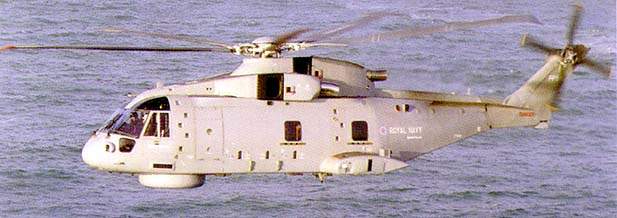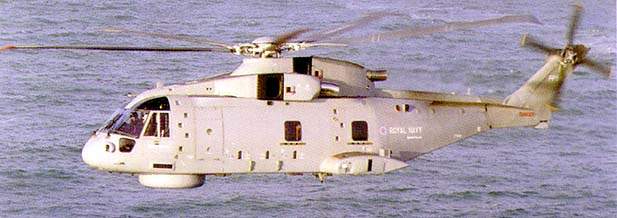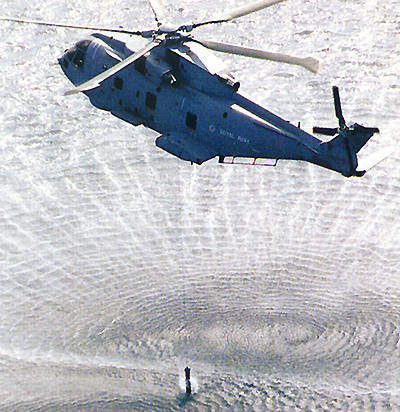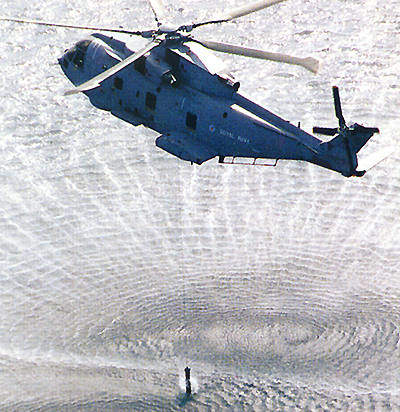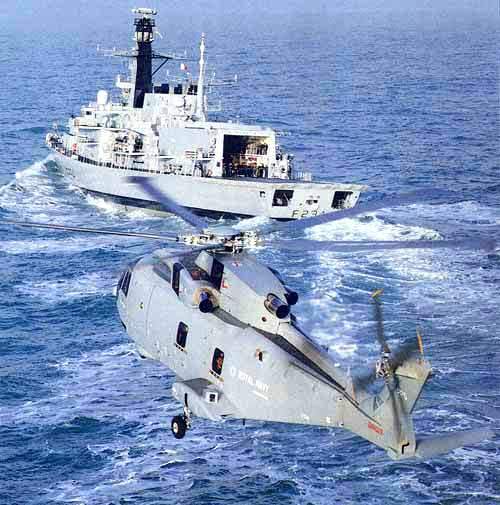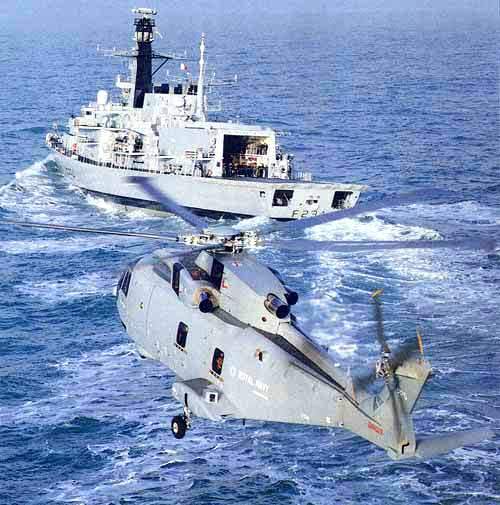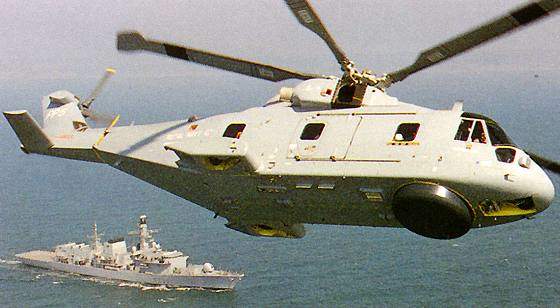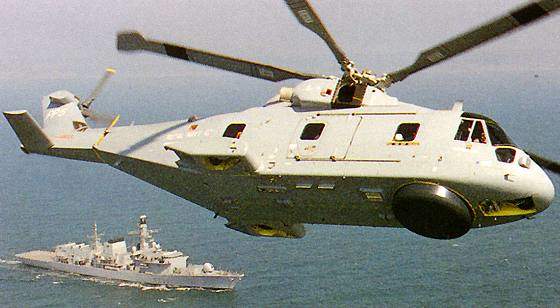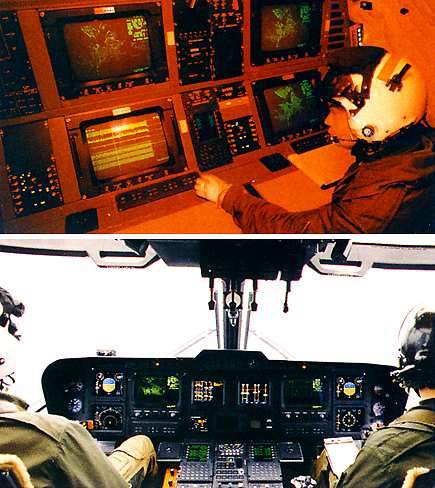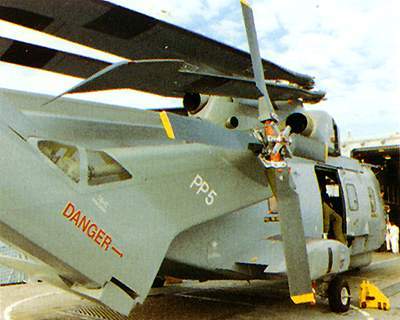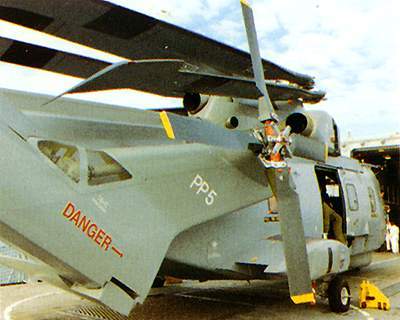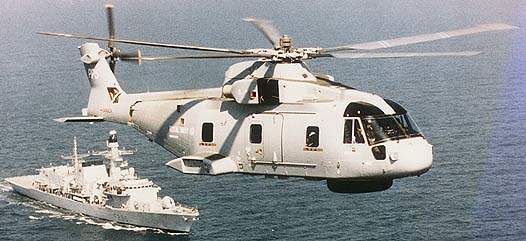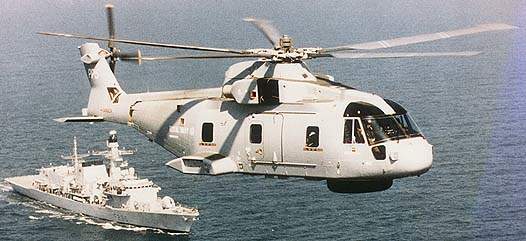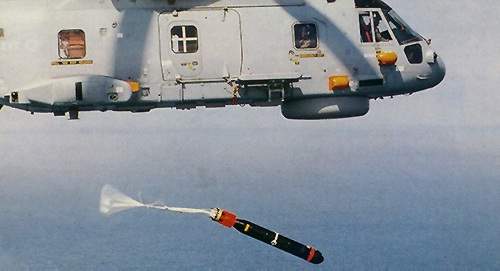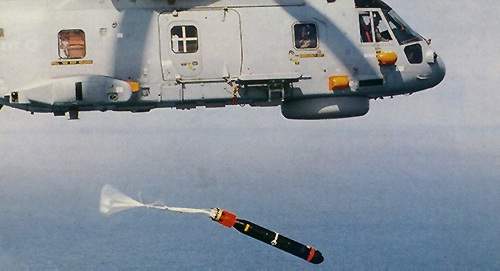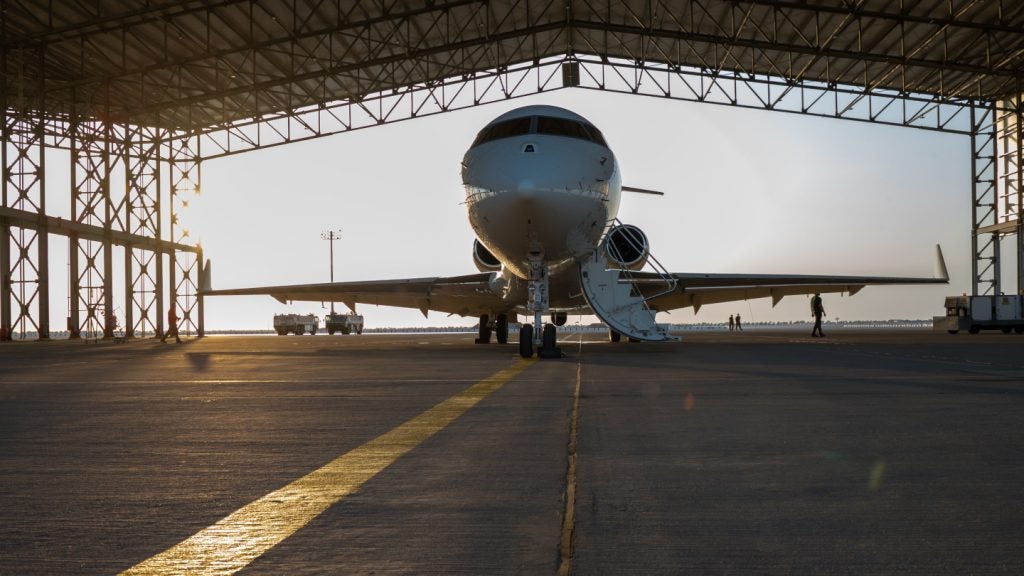The UK Royal Navy Merlin medium lift helicopter is a variant of the EH101 helicopter developed by AgustaWestland (formerly EH Industries). Italy and Great Britain signed a Memorandum of Understanding in 1979 to develop a medium lift helicopter and Agusta and GKN Westland formed a joint venture company, EH Industries, to manage the EH101 development. Agusta and GKN Westland Helicopters merged to form AgustaWestland in February 2001. Systems integration for the Merlin helicopter was carried out by Lockheed Martin UK Ltd of Portsmouth.
The helicopter’s primary roles are anti-surface ship and submarine warfare, tracking and surveillance, amphibious operations, and search and rescue missions. It will operate from Type 22 and Type 23 Class frigates, Invincible Class aircraft carriers and various amphibious warfare ships and land bases.
Merlin helicopter development
The first Merlin, designated HM mk1, entered service with the UK Royal Navy in December 1998, at Royal Naval Air Station Culdrose, where the first squadron of Merlins was formed in October 2001. In February 2002, the Merlin successfully completed sea trials on the HMS Ark Royal aircraft carrier.
The last of the 44 Royal Navy HMA1 Merlins was completed in November 2002. The last of 22 Merlin HC3 medium support helicopters for the UK Royal Air Force was also delivered in November 2002. The first entered service in December 2000. The RAF HC3 was deployed in Bosnia and Iraq.
The RAF fleet has been increased by six new Merlins transferred from Denmark, delivered between July 2007 and September 2008. The six helicopters entered operations in Afghanistan in 2009.
The EH101 naval helicopter is also in service with the Italian Navy and the Canadian armed forces and been ordered by the armed forces of Japan (14, first delivered March 2006), Denmark (14, first delivered January 2006) and Portugal (12, first delivered December 2004). A number of the Japanese helicopters have been configured for airborne mine countermeasures (AMCM) missions.
In February 2005, a version of the Merlin, the US101, was chosen as the replacement helicopter for the US Marine One presidential transport fleet requirement. The helicopter was proposed by Team US101, led by Lockheed Martin.
Merlin capability sustainment plus (CSP)
In January 2006, Lockheed Martin UK was awarded the contract for the Merlin capability sustainment plus (CSP) upgrade programme. 30 Merlin helicopters are to be upgraded under the contract, with a further eight on option. The programme is planned to sustain capability until the planned 2030 out-of-service date.
The upgrades are to include: the introduction of open systems architecture, improvements to mission system processing, new touch-screen flat-panel flight displays and upgrades to the Blue Kestrel radar and sonar systems. Entry into service for the upgraded helicopter is planned for 2013. Thales UK was awarded the contract for upgrades to the acoustic processing suite in July 2006. Galileo Avionica is to supply new mission managements systems, under a contract awarded in March 2007.
Under the Merlin CSP, the helicopters were also to be fitted with AgustaWestland’s helicopter electro actuation technology (HEAT), a fly-by-wire system that uses electrical actuators to replace the hydraulic systems. However this part of the programme has been dropped because of concerns over the maturity of the technology. BAE Systems is supplying the dual-lane digital flight control computers.
In a separate upgrade programme, AgustaWestland is fitting new-generation BERP IV main rotor blades to UK RAF HC3 Merlins. The new blades provide reduced vibration, an increase in cruise speed of 10kt and additional payload of 650kg. Merlins fitted with the new blades achieved initial operating capability in March 2008.
Cockpit
The cockpit is equipped with six high-definition colour displays plus an optional pilot’s mission display unit supplied by Northrop Grumman ( formerly Litton). Dual flight controls are provided for the pilot and copilot on all versions of the EH101, but the Merlin helicopter is capable of being flown by a single pilot.
The cockpit is Generation III night-vision goggle compatible. The crew of the naval anti-submarine warfare version of the helicopter also includes an observer and an acoustic surveillance systems operator.
Weapons
Merlin has the capacity to carry up to four homing torpedoes, such as the BAE Systems Stingray torpedoes or mk11 depth bombs. The anti-surface version is able to carry a range of air-to-surface missiles, including sea-skimming anti-ship missiles. There are optional gun positions through removable windows, the starboard cargo door and the port crew door.
Sensors
The medium and low-frequency active dipping sonar is the Flash lightweight folding acoustic sonar from Thales Underwater Systems (formerly Thomson Marconi Sonar). Flash can search to a maximum depth of 2,000ft.
The helicopter is equipped with a Normalier-Garrett mission recorder and two sonobuoy and flare dispensers, together with Chelton sonobuoy homers. The sonobuoys are Difar, Barra, Harp and VLA.
On an anti-submarine warfare active dipping mission over a radius of operation of 50 nautical miles, there is sufficient fuel in the internal fuel tanks to provide 190 minutes on station with a 20-minute fuel reserve. On an anti-submarine warfare passive sonobouy mission, the helicopter time on station is 210 minutes at a radius of operation of 100 nautical miles, and 90 minutes at a radius of operation 200 nautical miles.
In the anti-ship surveillance and tracking role, Merlin uses its tactical surveillance and over-the-horizon targeting radar to identify the positions of hostile ships and relay the data to the allied command ship. The electronic support measures system is the Kestrel (Royal Navy designation Orange Reaper) from Thales Defence. Using the Kestrel ESM and the BAE Systems Blue Kestrel search radar, the Merlin helicopter is able to search an area of approximately 200,000km² in a single four-hour sortie.
Lockheed Martin is providing a new electro-optic / infrared surveillance pod, which will be mounted initially on an existing weapon pylon.
Flight control
The helicopter is equipped with a Smiths Industries OMI SEP 2 dual redundant digital air flight control system with an Alenia Marconi Systems aircraft management computer. The suite of sensors includes: BAE Systems LINS300 ring laser gyroscope inertial reference unit, LISA-4000 strapdown attitude heading reference system, Thales 91E doppler velocity sensor, Cossor global positioning sensor, two Thales AHV-16 radar altimeters and a BAE Systems low-airspeed sensor and air data system.
A dual redundant aircraft management computer carries out a range of functions, including navigation, cockpit display management, performance monitoring, health and usage monitoring of engines, drives, avionics, utilities, and control of the 1553 data bus.
Engines
The Merlin is powered by three Rolls-Royce Turbomeca RTM 322 02/8 engines, each fed by an individual fuel tank. The three tanks hold 3,222l of fuel. The helicopter is equipped with a computerised fuel management system. A hover in flight refuelling (HIFR) unit is installed internally in the cabin.

